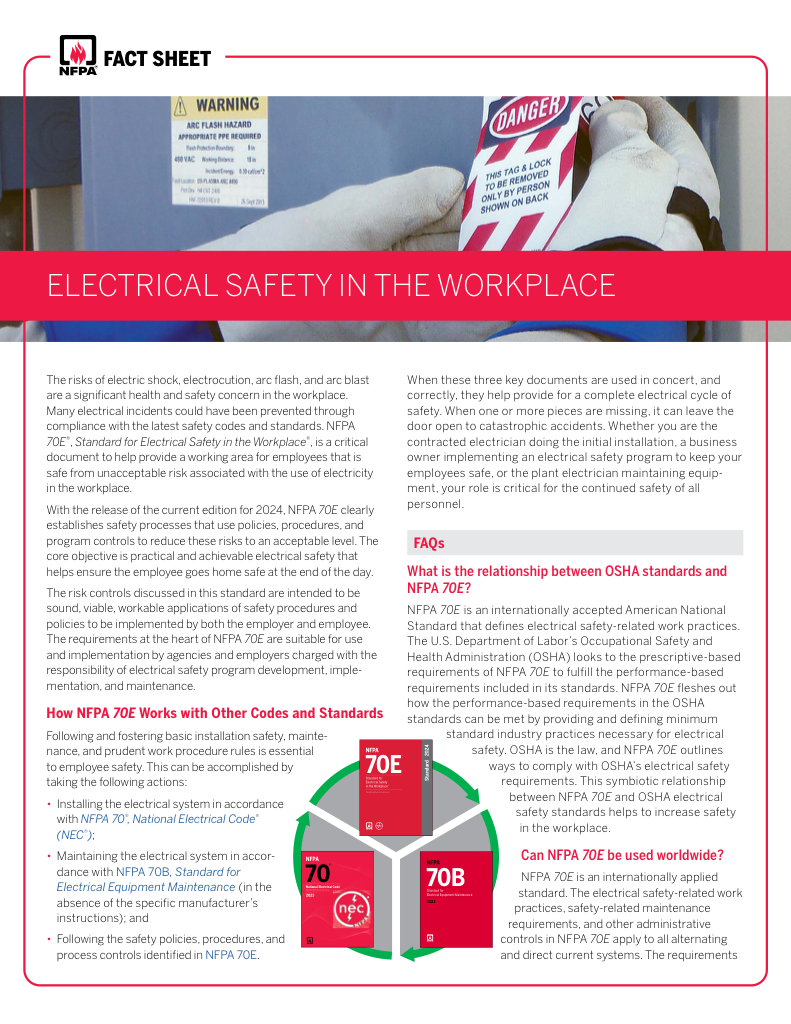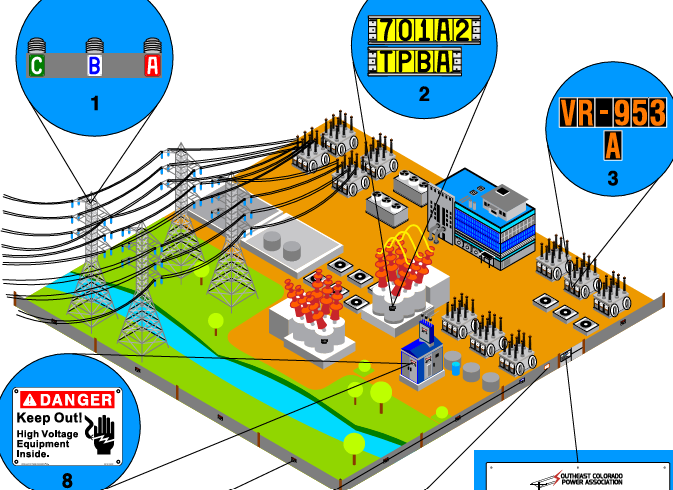How Hot Is an Arc Flash? Temperatures and Thermal Hazards

CSA Z462 Arc Flash Training - Electrical Safety Essentials
Our customized live online or in‑person group training can be delivered to your staff at your location.

- Live Online
- 6 hours Instructor-led
- Group Training Available
Download Our NFPA 70E Fact Sheet – 2024 Electrical Safety Edition

- Understand how NFPA 70E works with NEC and NFPA 70B standards
- Clarify the shared responsibility between employers and employees
- Learn how NFPA 70E supports OSHA compliance
How hot is an arc flash? Up to 35,000°F (19,400°C), generating plasma, thermal radiation, and molten metal spray; incident energy measured in cal/cm² drives PPE categories per NFPA 70E and OSHA electrical safety standards.
How Hot Is an Arc Flash?
Arc flashes reach up to 35,000°F, creating plasma and extreme incident energy requiring PPE.
✅ Peak temperatures up to 35,000°F from ionized-air plasma
✅ Incident energy rated in cal/cm² guides PPE and boundaries
✅ Governed by NFPA 70E; depends on fault current and clearing time
How hot is an arc flash? An arc flash can reach temperatures over 35,000°F (19,400°C) — hotter than the surface of the sun. This type of electrical explosion generates intense thermal energy in milliseconds, making it one of the most dangerous workplace hazards. The heat can vaporize metal, ignite clothing, and cause severe burns several feet from the source. See this page for more information about arc flash temperature.
These extreme temperatures pose a risk not just at the point of the fault but radiate outward, creating a deadly zone of heat and pressure. In the sections below, we’ll explore how arc flash temperatures are measured, what factors influence their severity, and how proper PPE and safety planning can protect against this intense thermal energy. For a concise overview of the event itself, see this explanation of what an arc flash is and why its energy release is so dangerous.
Training frameworks align terminology with arc flash hazard assessments used to set boundaries and PPE levels.
Both standards reference the formal arc flash definition to ensure consistent labeling and risk communication.
Electricity Today T&D Magazine Subscribe for FREE

- Timely insights from industry experts
- Practical solutions T&D engineers
- Free access to every issue
Request a Free Training Quotation
During a flashover incident, temperatures can soar to levels that instantly vaporize metal and severely injure anyone nearby. The extreme heat generated by an electrical arc occurs when energized electrical equipment experiences a fault, releasing intense thermal energy, pressure, and light. These events are often accompanied by a flash and arc blast, making them among the most dangerous hazards in industrial and utility settings. To mitigate these risks, workers must follow safe work practices outlined in standards like NFPA 70E, which emphasize using flash protection and personal protective equipment (PPE). Proper training, equipment, and procedures are essential to maintaining workplace safety and health when working around high-voltage systems. Understanding an electrical arc flash in terms of current path, enclosure effects, and clearing time helps engineers select effective mitigation strategies.
The Science Behind Arc Flash Temperatures
Arc-related hazards occur when electrical current leaves its intended path and arcs through the air. This event releases massive thermal energy through light, pressure, and extreme heat. Depending on system voltage and available fault current, the core temperature of the arc can rapidly surpass 35,000°F at the point of origin. Detailed studies of arc flash temperature explain how plasma formation drives heat transfer beyond the arc column.
Such conditions can:
- Vaporize copper conductors
- Ignite surrounding materials
- Instantly char unprotected skin
- Cause fatal burns within milliseconds
The combination of thermal radiation, convective heat, and blasting pressure makes incidents one of any facility's most severe electrical hazards.
How Far Can Arc Flash Heat Travel?
While the arc's core is the hottest, significant heat can radiate several feet away. The incident energy at a specific distance—measured in calories per square centimeter (cal/cm²)—determines the likelihood and severity of burns.
For example:
- 1.2 cal/cm² = potential for second-degree burns
- 4 cal/cm² = requires Category 1 PPE
- 40 cal/cm²+ = extreme hazard, requires specialized suits
Boundary calculations are based on these thresholds to define safe working distances. This phenomenon, sometimes described as an electric flash underscores why approach boundaries change with system configuration.
Real-World Consequences of Extreme Heat
The intense temperature of an sudden electrical fault can:
- Ignite flammable clothing within milliseconds
- Melt steel tools and hardware
- Cause skin burns through protective clothing if not properly rated
- Propel superheated gases outward with deadly force
These incidents affect people in direct contact and pose a threat to anyone nearby if safeguards aren’t in place. A review of injuries associated with arc flash shows patterns of burns, blast trauma, and eye damage that inform medical response protocols.
Protecting Against the Heat of an Arc Flash
To mitigate risk, facilities rely on:
- Incident energy analysis to estimate thermal exposure
- Arc-rated PPE based on calculated energy levels
- Engineering controls like arc-resistant gear and insulation
- NFPA 70E or CSA Z462 compliance to guide work practices
Every safety program should factor in not just the electrical hazard itself, but the thermal energy it produces.
So, just how hot is an arc flash? With temperatures exceeding 35,000°F, it’s one of the most extreme hazards in electrical work. The best defense lies in proper planning: accurate boundary calculations, arc-rated PPE, and a deep understanding of heat transfer in these explosive events. By respecting the science behind thermal temperatures, facilities can better protect their workers and reduce the devastating risks these incidents pose.
Test Your Knowledge About Arc Flash!
Think you know Arc Flash? Take our quick, interactive quiz and test your knowledge in minutes.
- Instantly see your results and score
- Identify strengths and areas for improvement
- Challenge yourself on real-world electrical topics








